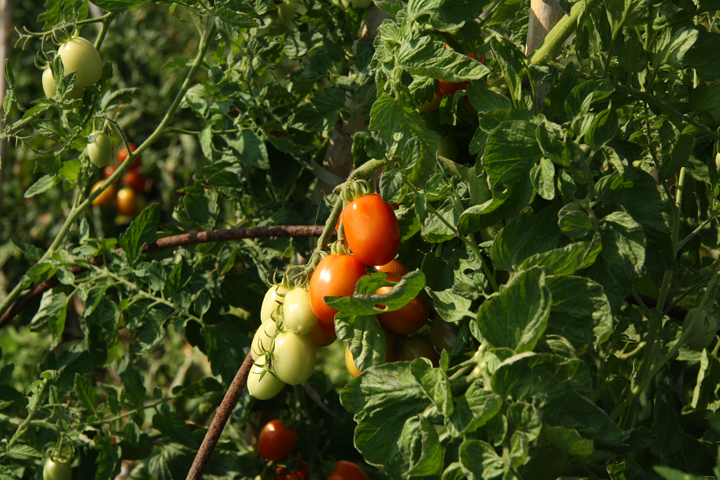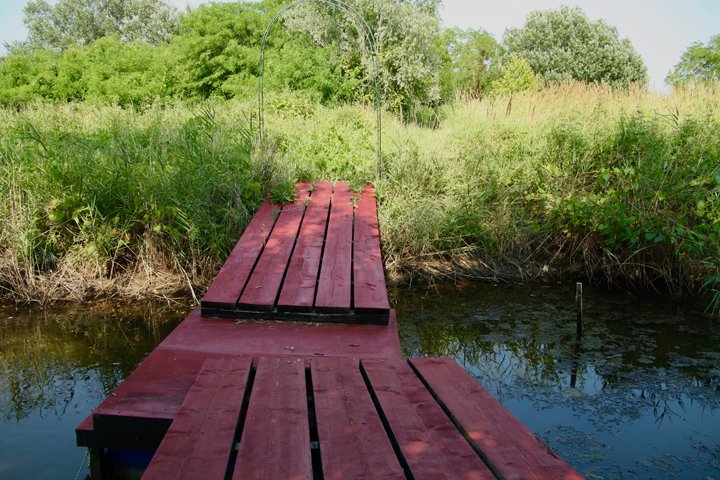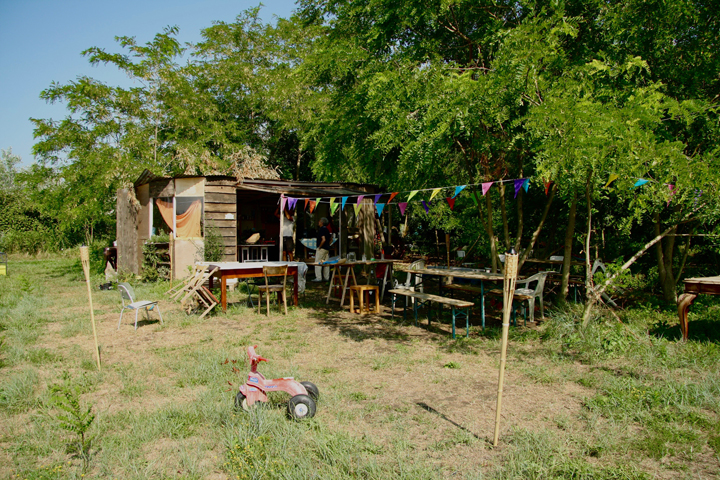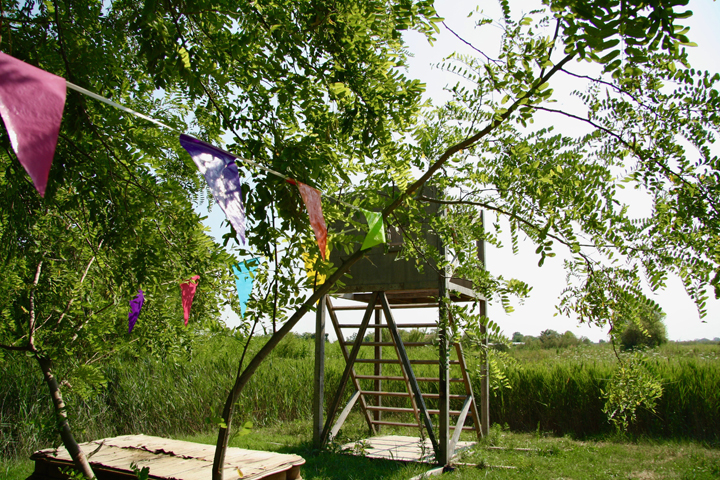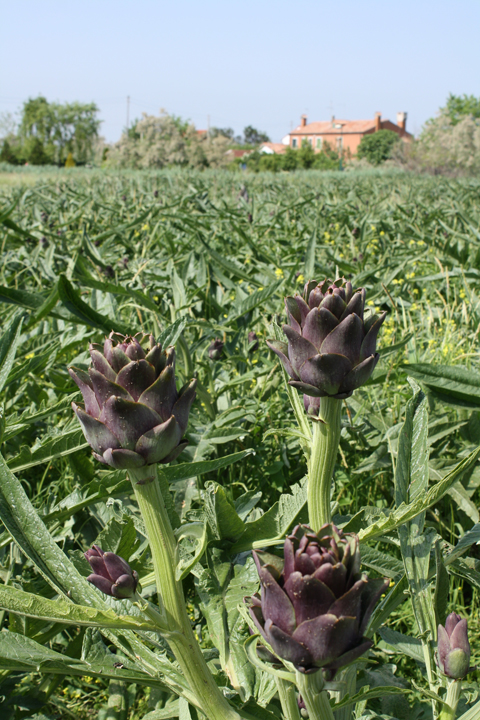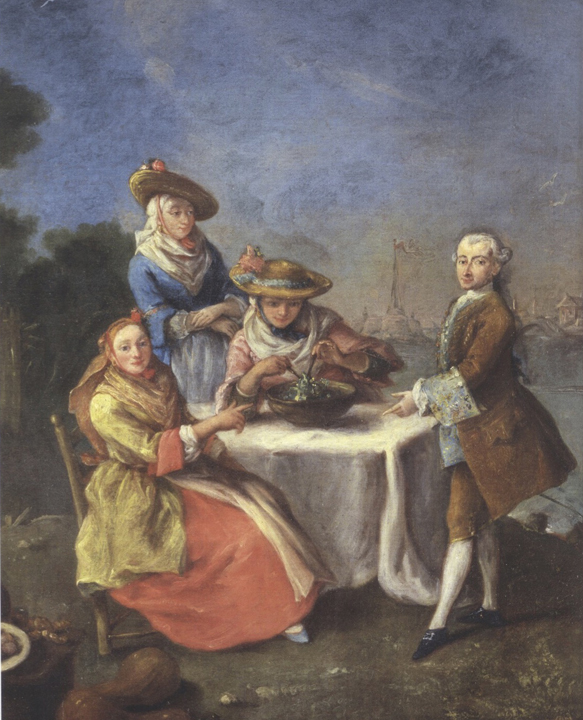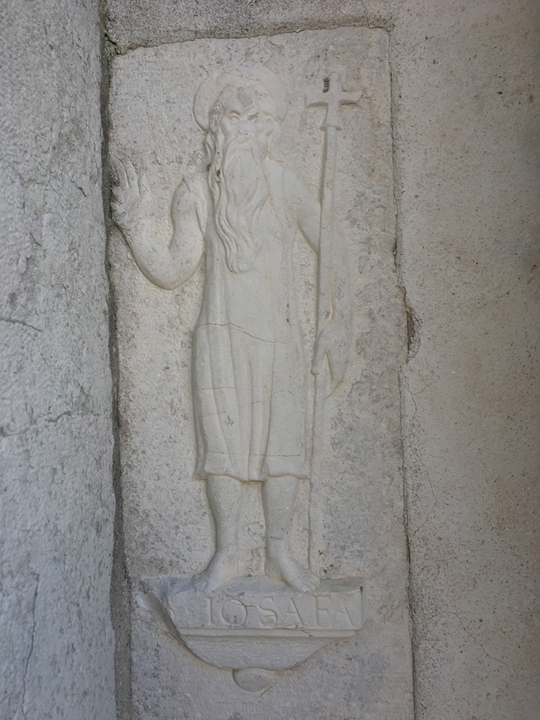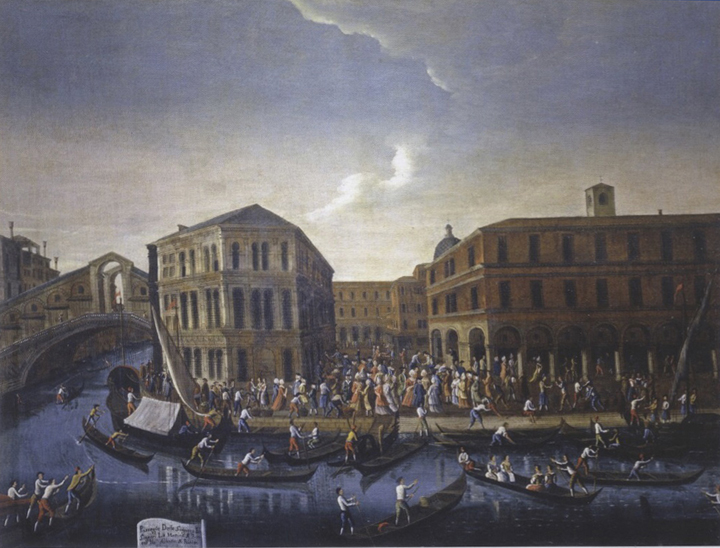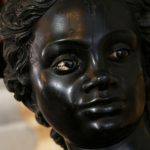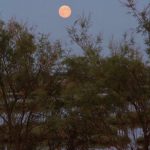The zucchini jam from the orchards of the Venetian island of Sant’Erasmo is really sweet and tasty. After I left the Maravegia orchard, our shopping bag was full of colours and great scents. Tomatoes, red and ripe, some onion sprouts and long green peppers. And the jam: I was so curious to discover what it would taste like.
I met Samuele Griggio and learnt about his farm on a very humid and hot Summer afternoon, while he was taking a break from work. La Maravegia (The Marvel in Venetian language) is the name of a farming project.
It started at the end of 2013 on a piece of land on the island of Sant’Erasmo previously abandoned for 12 years. The production is on a small scale, not using any pesticides, strictly organic and based on the idea that it is the soil that needs to be cultivated, not the plants.
Later, I was upset to learn that Italy is the country in Europe that uses the highest quantity of pesticides and that over one third of the water in Italy is contaminated with these substances in quantities that are higher than allowed by law. But more and more young people in Italy dedicate themselves to organic agriculture and to a new way of thinking this activity and Venice has something to say about it.
Farming in Venice: would you envision the lagoon landscape as cultivated countryside?
Brackish water with different graduation of salt is supposed not to be a good start for farming. And yet vegetables, fruit trees and vineyards (see my blog post on wine and Venice) have been a strong presence in the lagoon landscape and its orchards’ history. Especially when the population in Venice started growing in the 14th century, the city required more food resources. The lagoon was modified accordingly: reclamation work, fish farms, mills, more and more land for farming.
Here’s what would grow in an orchard by San Giobbe in Cannaregio in 1511: apples, pears, apricots, figs, cherries, peaches, pomegranates, quinces, pistachios, walnuts and hazelnuts; several different kinds of grapes; herbs; laurel, sage, lavender, rosemary, mint, basil; pumpkins, cucumbers, fennels, cabbage, peas, asparagus, lettuce, legumes, especially peas. Some came from the Orient, such as citrus fruits, melons, artichokes, spinach. Don’t tell me it does not water your mouth 🙂
Orchards in monasteries and Venetian islands
In town you would find many vegetable gardens connected to monastic life. But while the city was spreading at the expense of the green areas, then the growing need for more food brought more and more islands to become the orchards of Venice. At the same time, the need for a quick transportation of the otherwise perishable produce forced the men and women of those islands to become excellent rowers: it was in fact forbidden to sell something rotten or not fully ripe in the Rialto markets…
Apart from Sant’Erasmo island, in the ancient documents more islands get mentioned for their orchards, such as San Secondo, Torcello, Mazzorbo, Lio Maggiore, Ammiana, San Nicolò di Lido and the Giudecca. Garlic, onions, leech, turnips, carrots would also be available together with glasswort (or salicornia) that protected sailors against scurvy and still features in our market as a special delicacy. And flowers like tulips, hyacinths, jasmin and carnations would grow there too.
When visiting Ca’ Rezzonico, don’t miss the little painting by Pietro Longhi, commissioned by Giovanni Grimani in 1759 showing some noblemen enjoying a picnic on some Venetian island. Young, cheerful friends enjoying a salad, some boiled eggs, small sausages, a bottle of wine and a couple of pumpkins. Noble ladies are wearing their comfortable clothes and while putting the dressing on the salad, they show that appreciation for this kind of food has existed for centuries 🙂
The guild of the fruit vendors and a wonderful Patron Saint, Josaphat
The brotherhood of the fruit vendors was recognised and given a seat in the Church of Santa Maria Formosa in 1423. Divided into three sub-sections: the ones selling fresh and dried fruits, the ones selling vegetables and the ones selling citrus fruits. Here is the sign dating back to 1508 kept in the Correr Museum:
To the right you see a boat full of fruits. To the left someone is weighing the produce while a young boy is holding a bowl. As a gorgeous festoon, colourful fruits, I especially love that piece of watermelon inviting us to enjoy the summer!
But, wait, have you also noticed? There’s a man with a crown, a cross and he is blessing us. A hermit, bare arms, thin. St Josaphat blesses us in this old bas-relief still today:
The legend claims he was an Indian prince, whose father was told he would embrace a different life as a Christian. No matter what the father did to prevent it, the son did follow his destiny, refused the crown and became a hermit. This story should sound familiar as it is the same story of Buddha. In Sanskrit the name is Bodhisattva, transformed into Budasaf and eventually Josaphat. This story was very popular. It was translated into Greek and Latin and several vulgar languages, also in the Legenda Aurea by Jacopo from Varagine.
The Rialto vegetable market and the Erbaria
So while the Rialto market stands sell less vegetables or fruit and engage the tourists’ attention with little packages with some rice and colourful spices, that have nothing to do with the history of the place, young entrepreneurs rediscover agriculture in the lagoon islands. Not just La Maravegia, but more, on the Giudecca island, especially. And in some other more peripheral areas of the city they open their markets, maybe once a week, such as the market arranged by the association “About”. Or entertain connections with wwoofing projects.
And my thought goes to the painting by Gabriel Bella at the Querini Stampalia Museum, representing the Erbaria (where herbs were once sold). Noblemen, patricians and adventurers, reported Casanova, after the night spent enjoying themselves and gambling, came here in the morning to recover energy, with Venetian fruits.
by Luisella Romeo
registered tourist guide in Venice, Italy
www.seevenice.it



